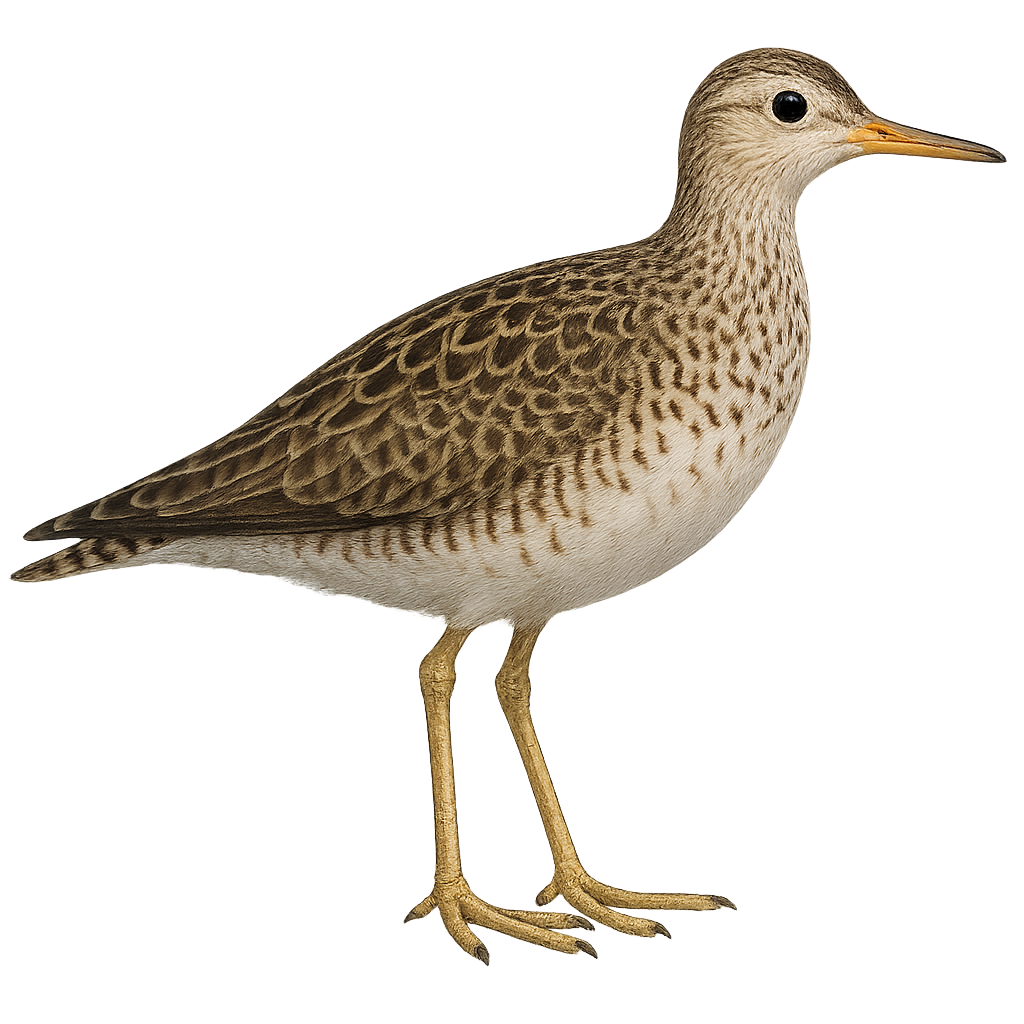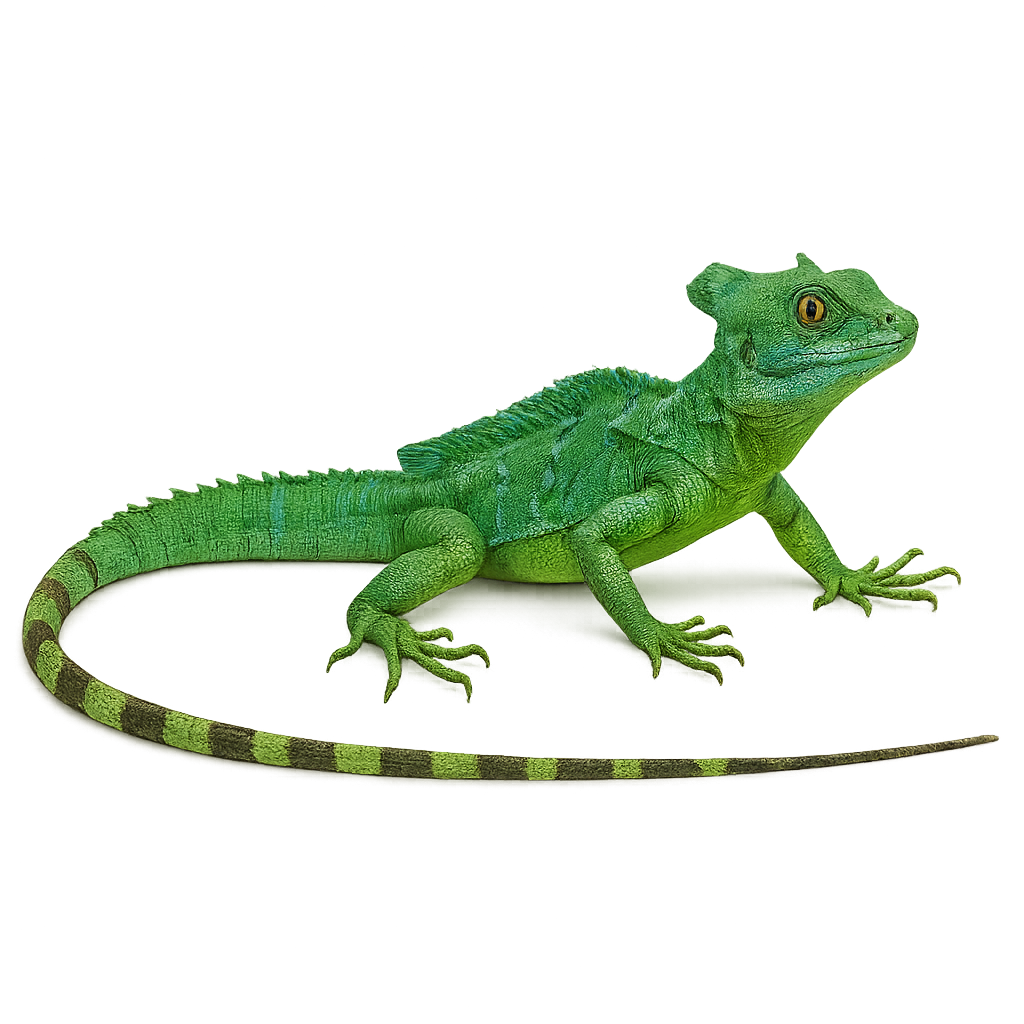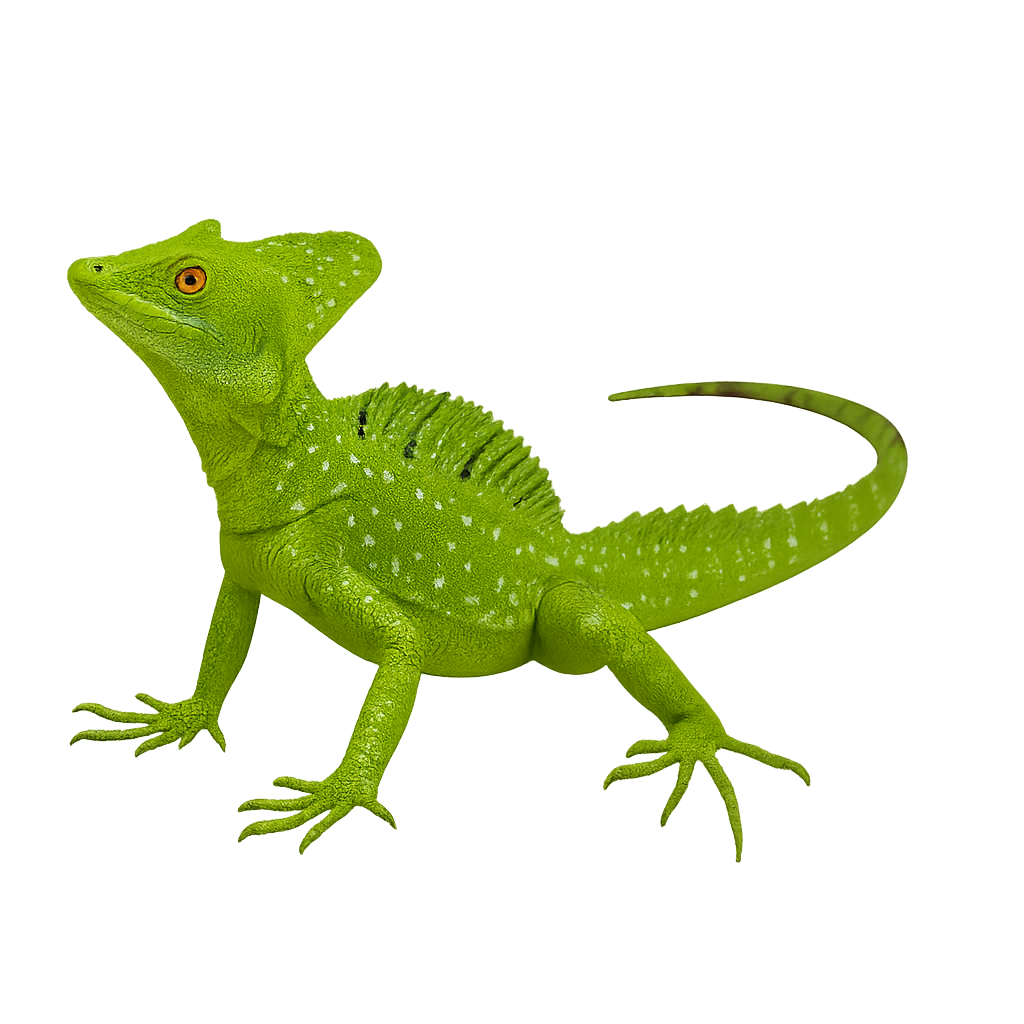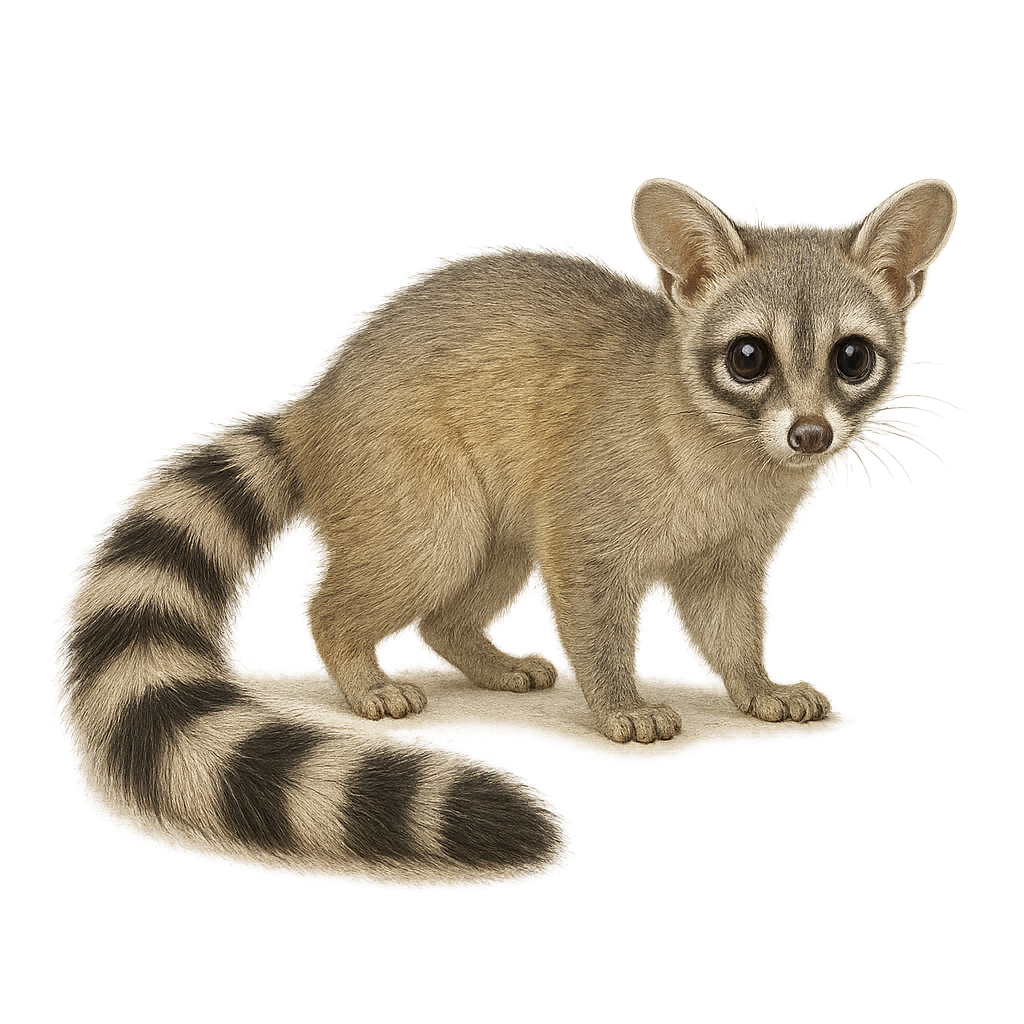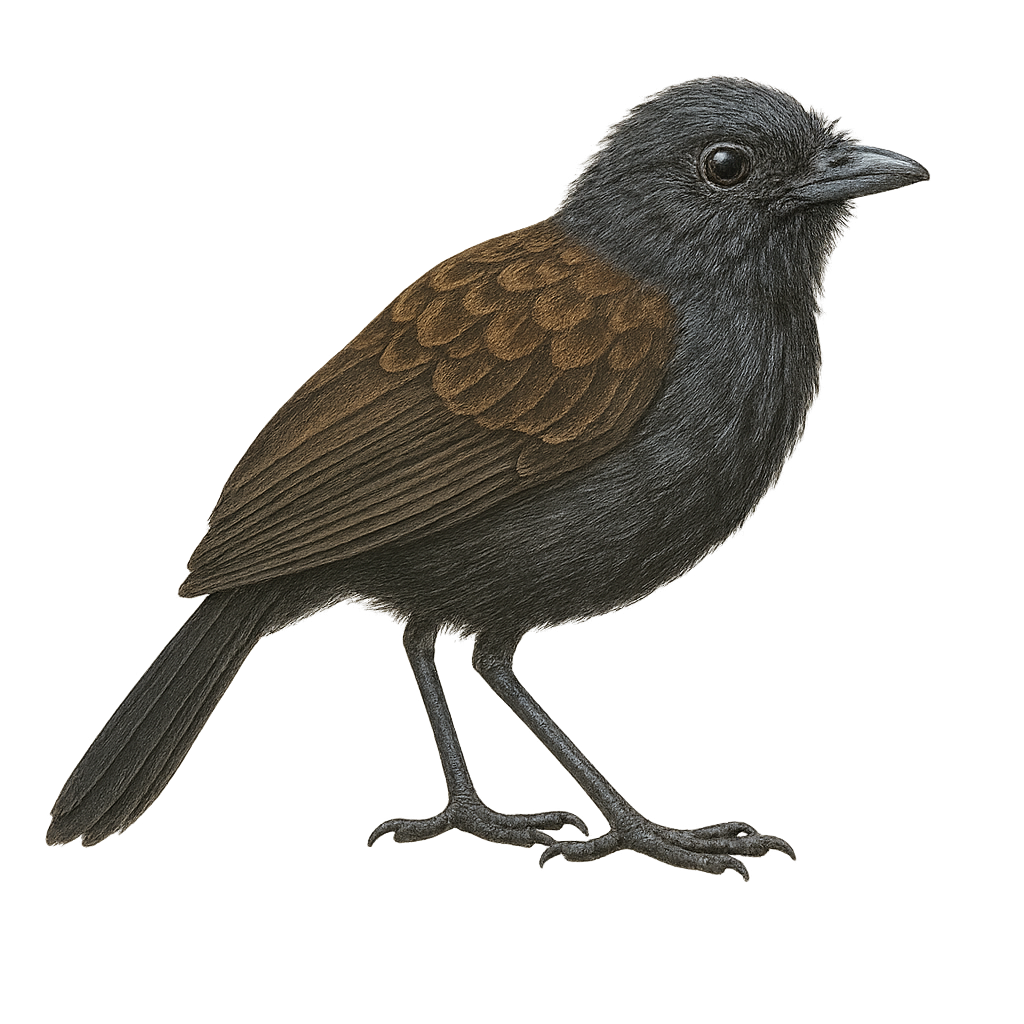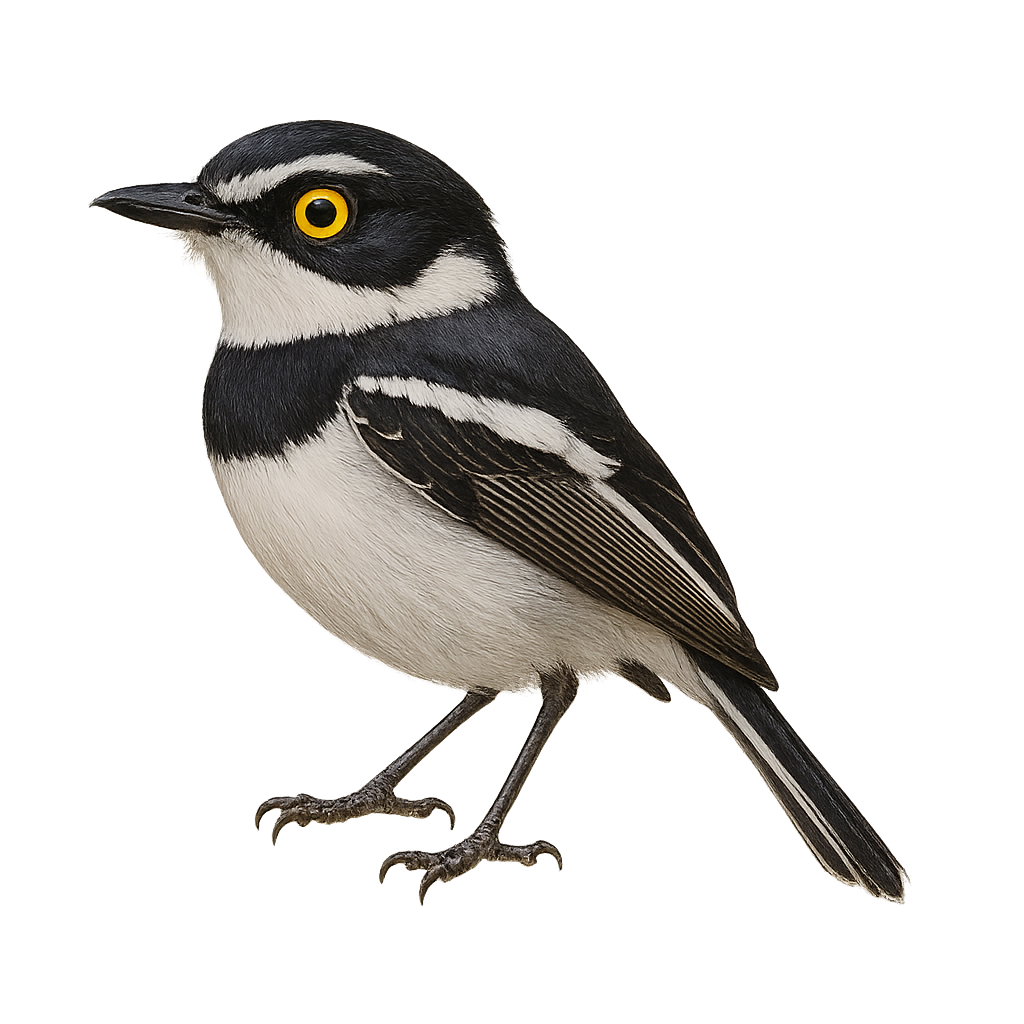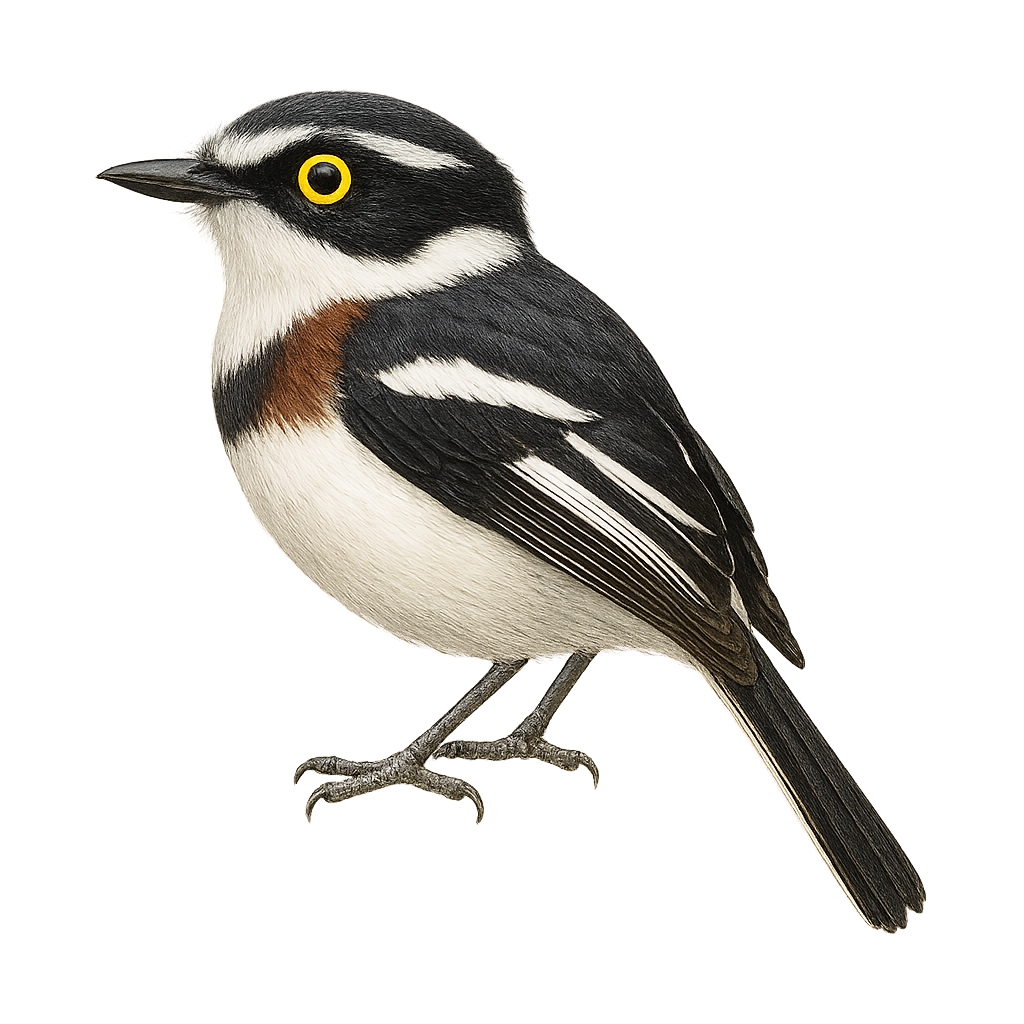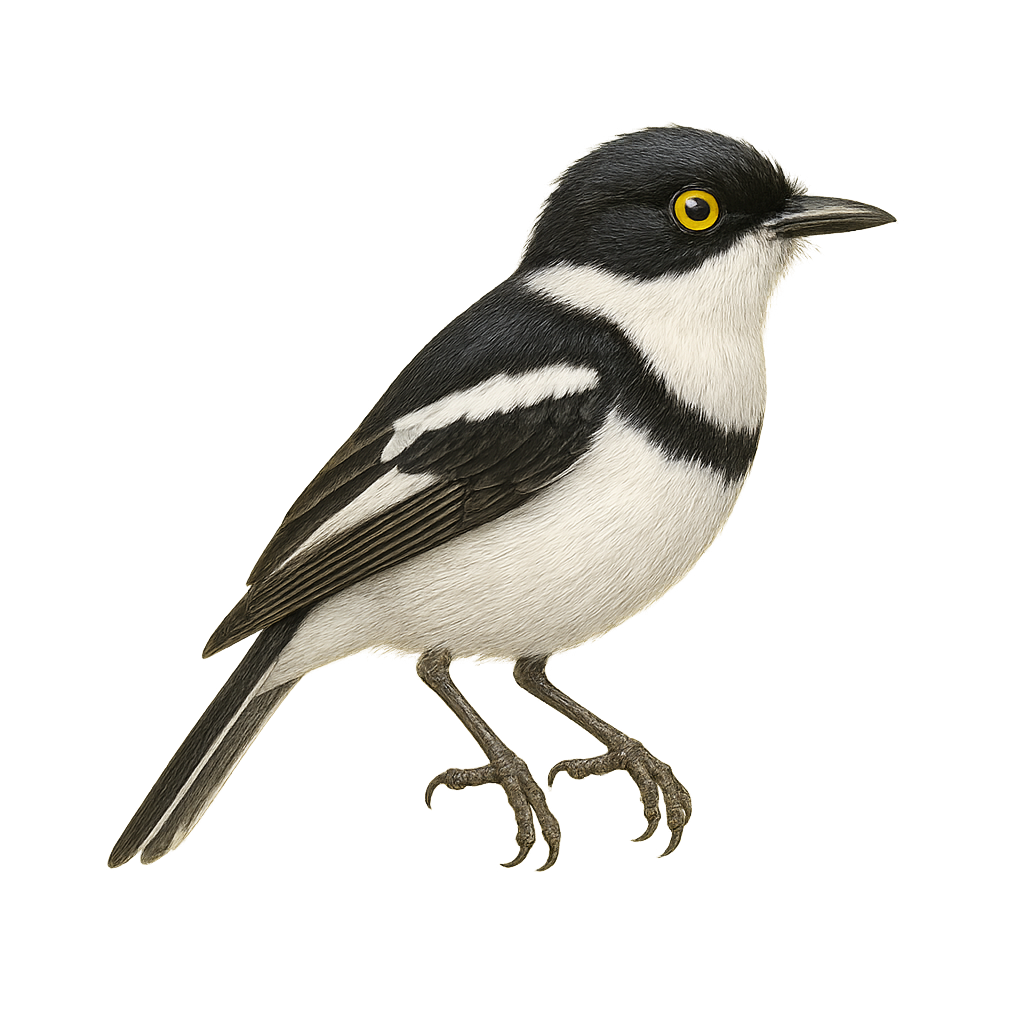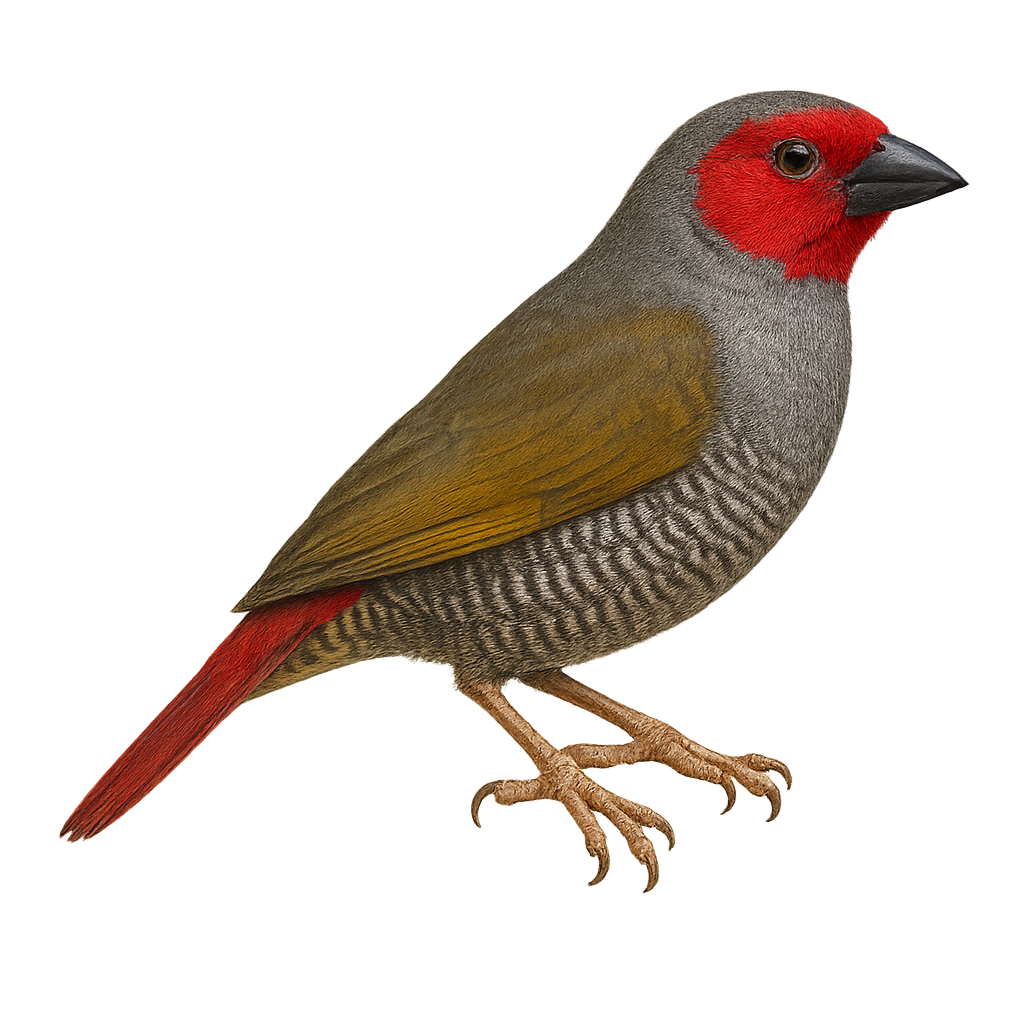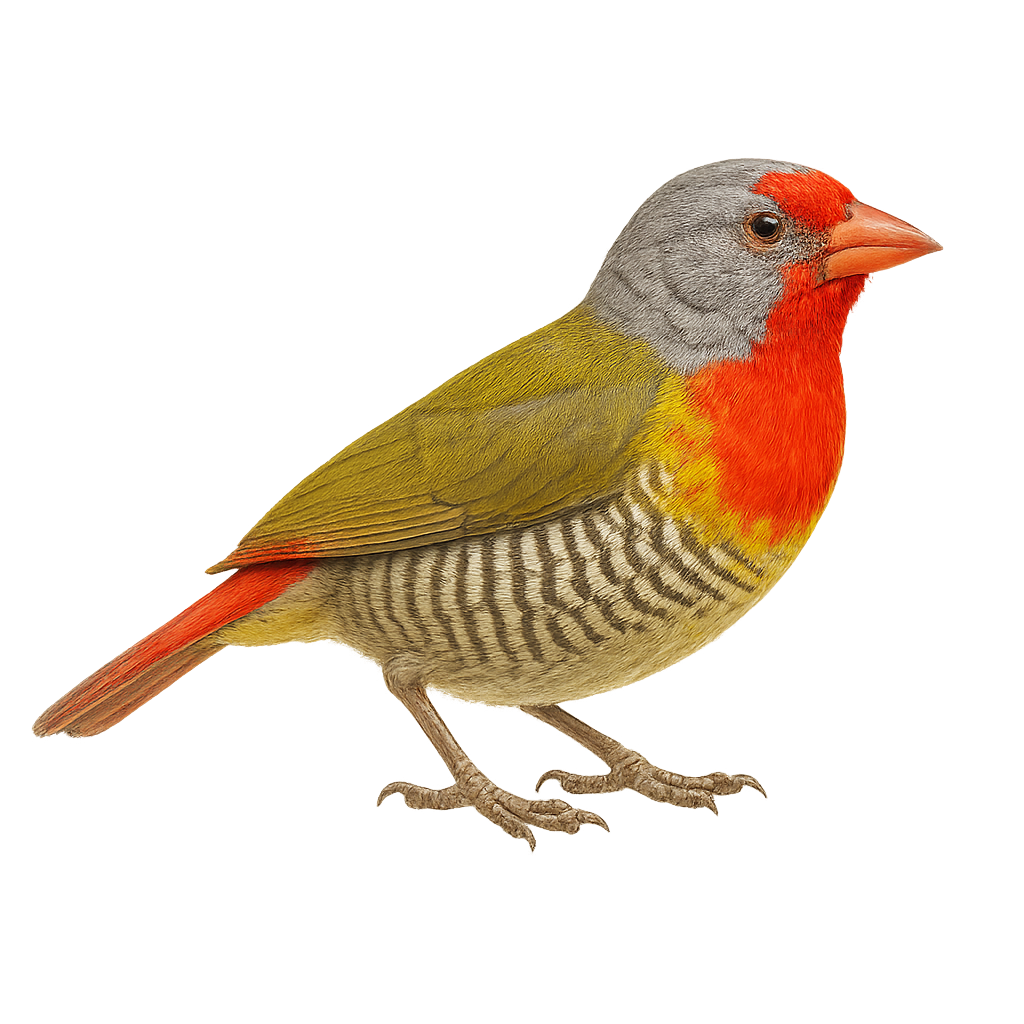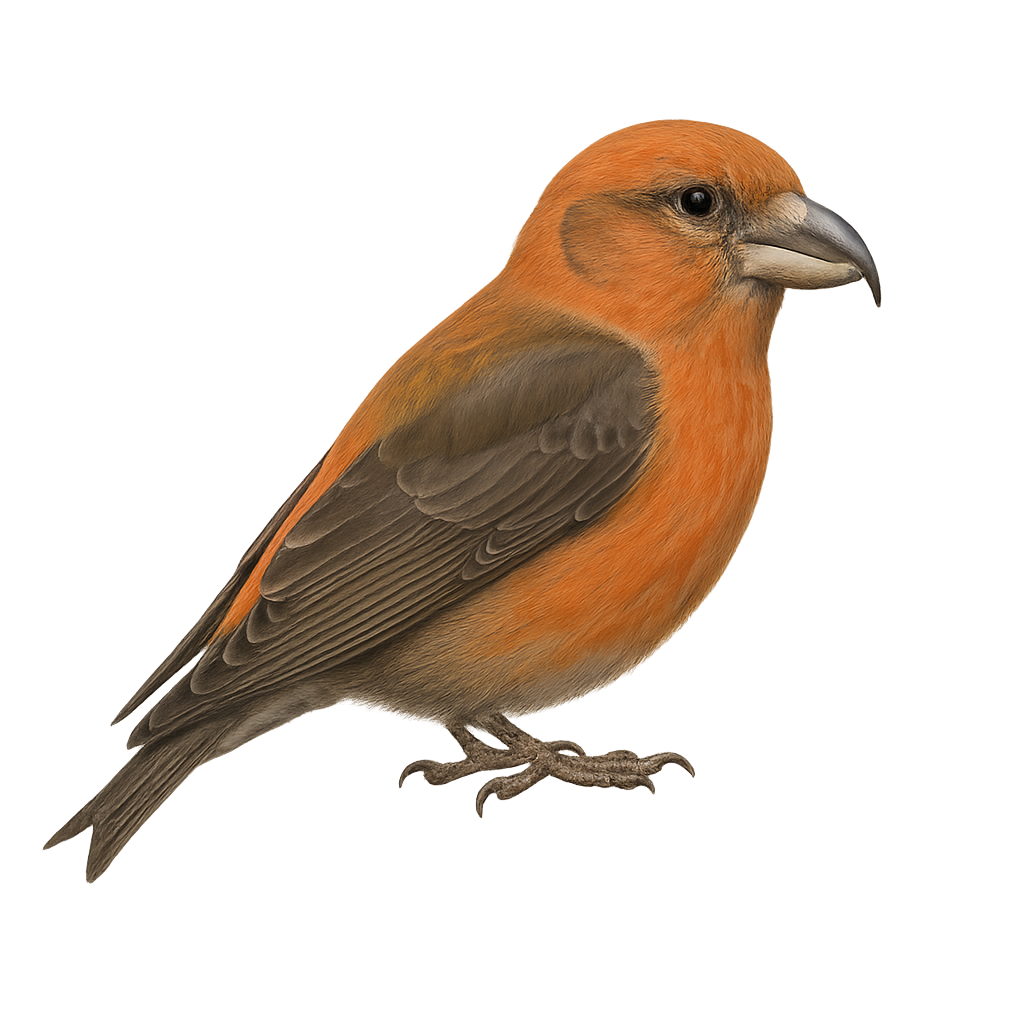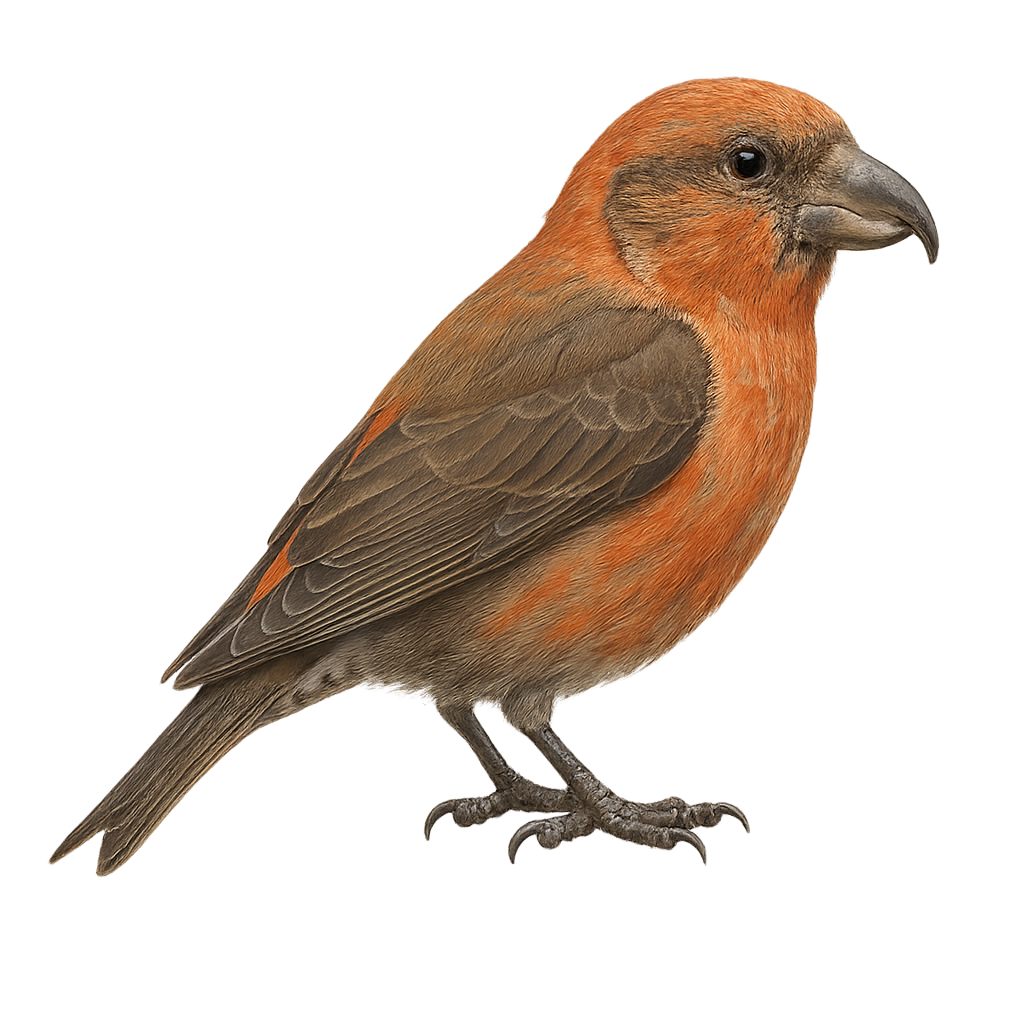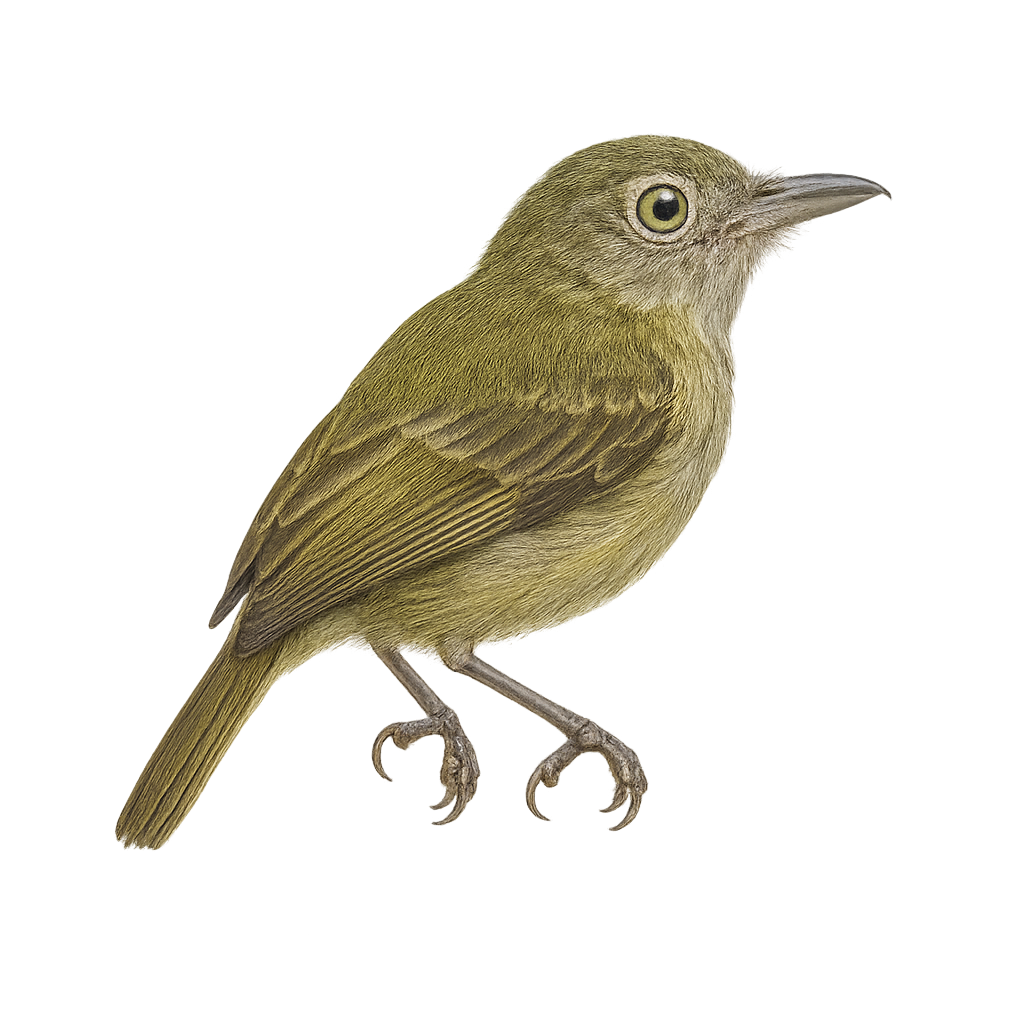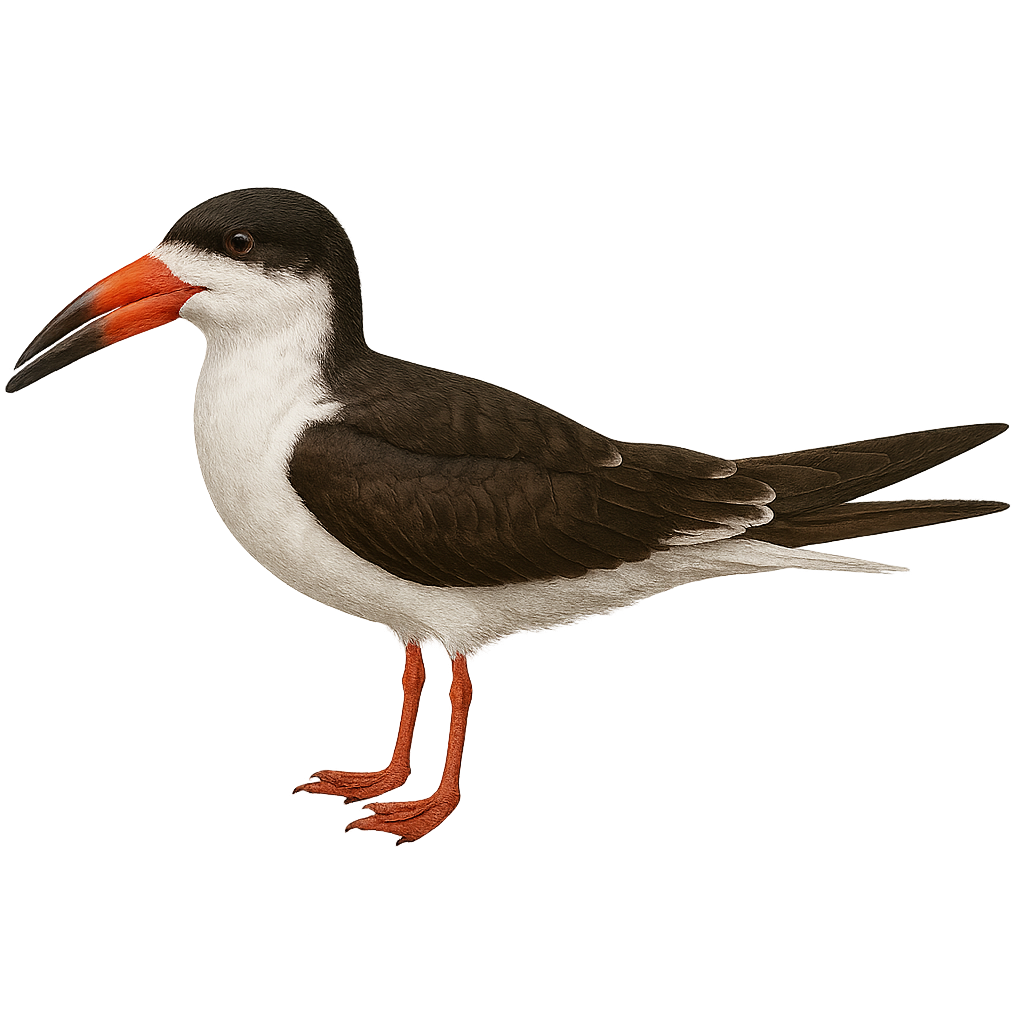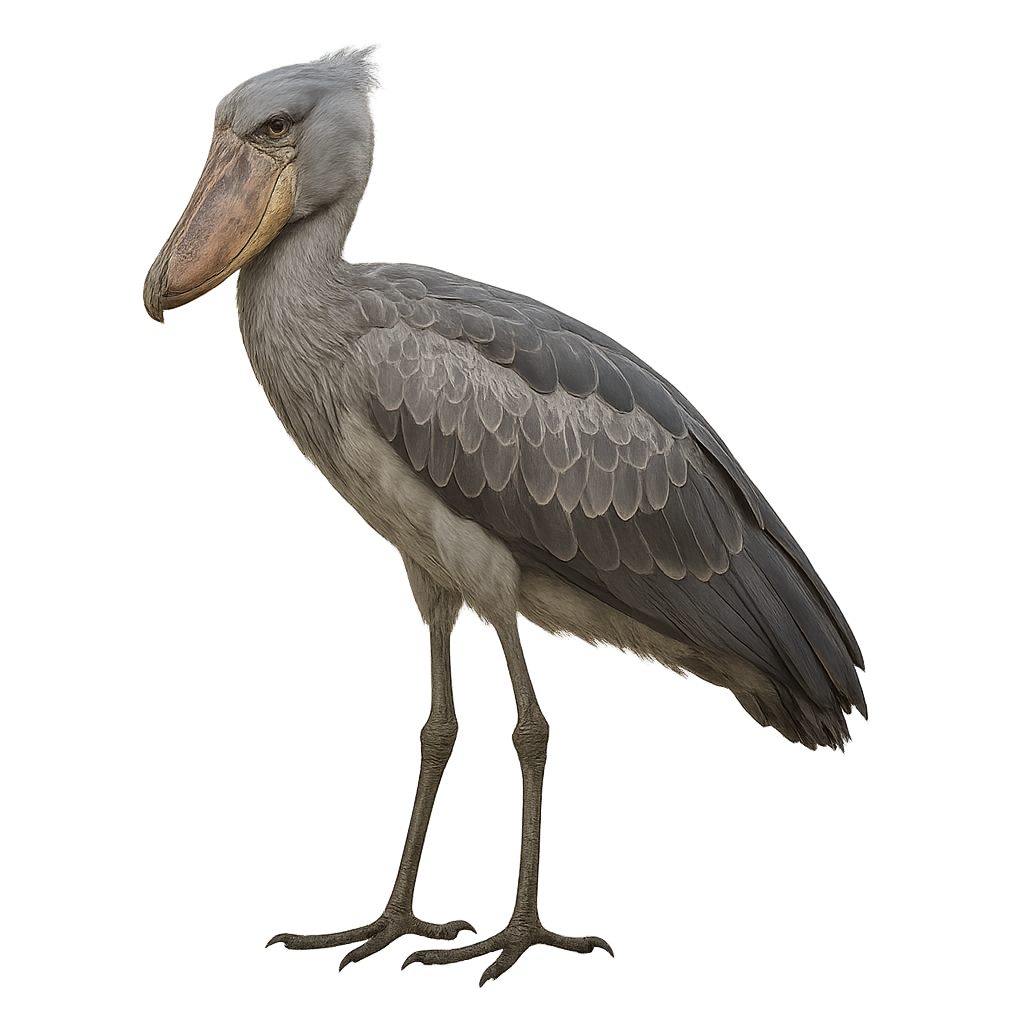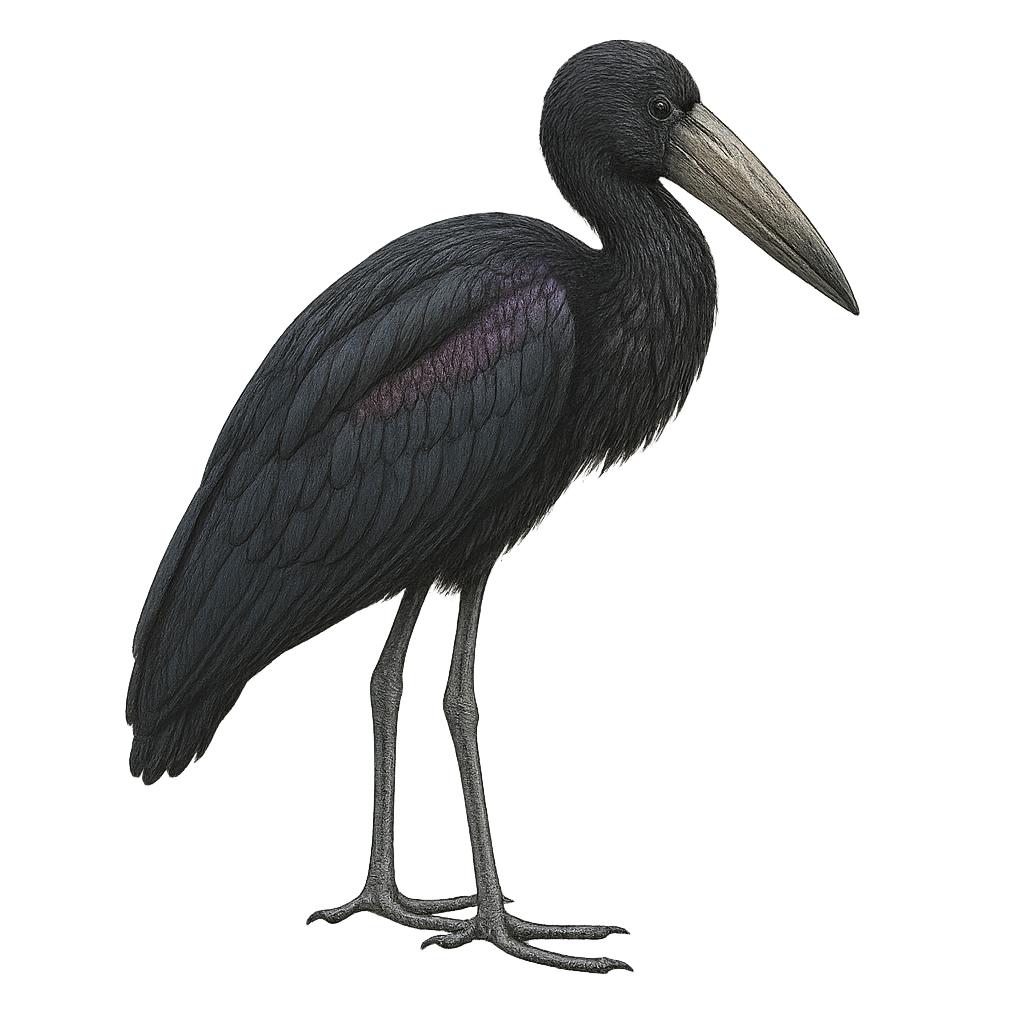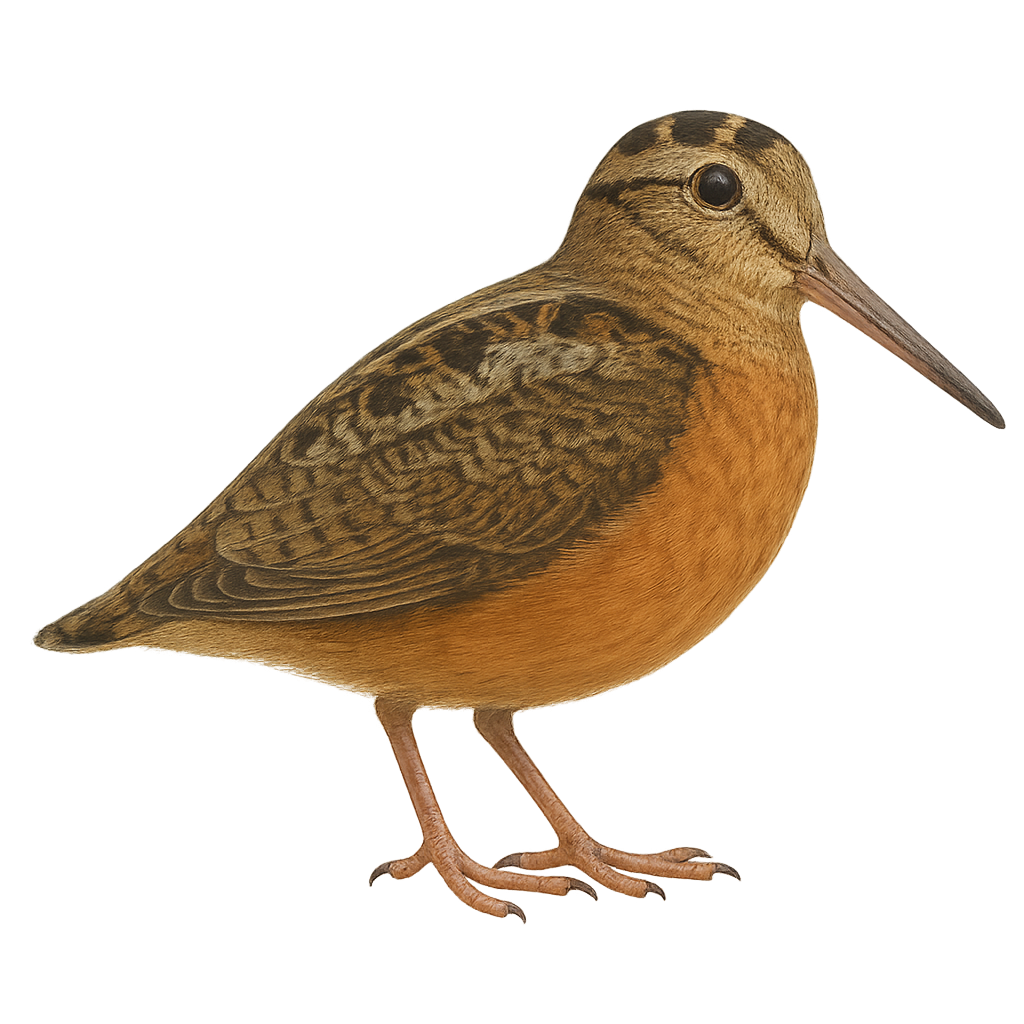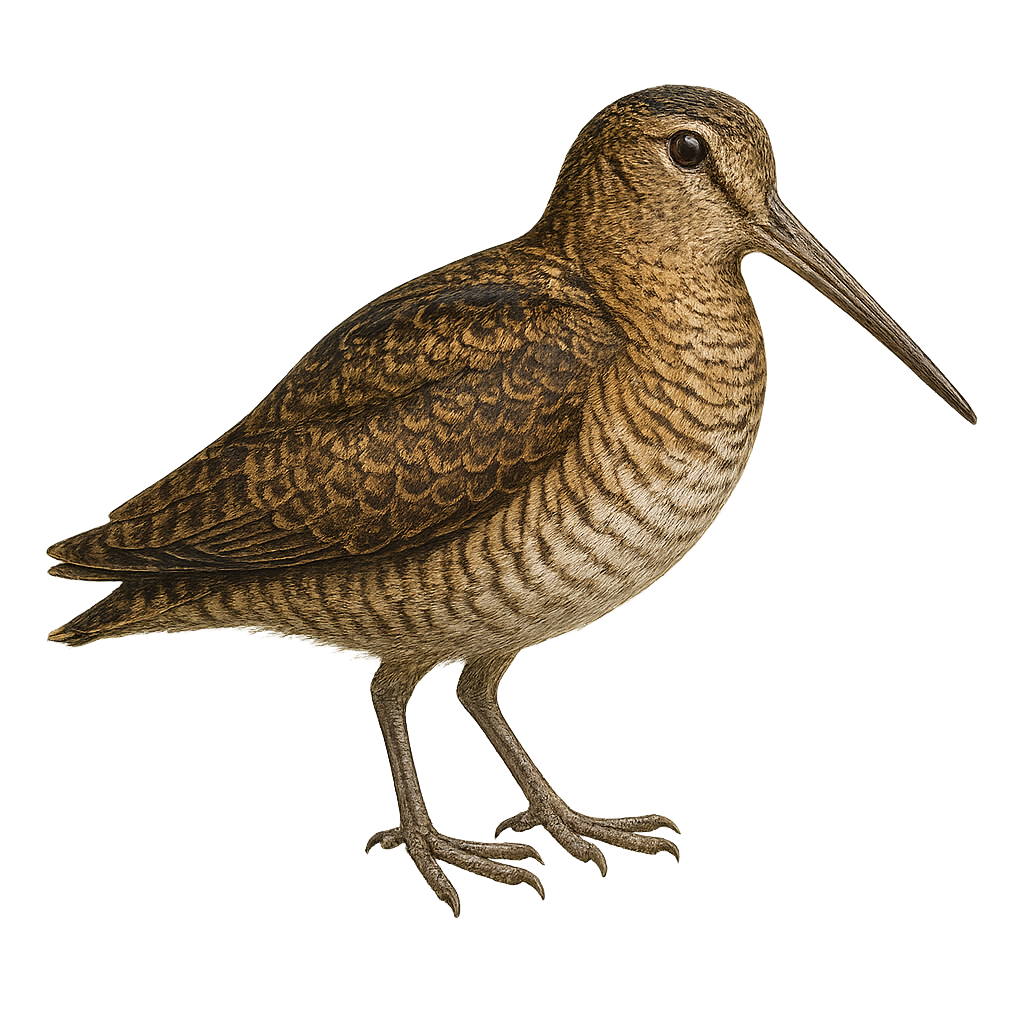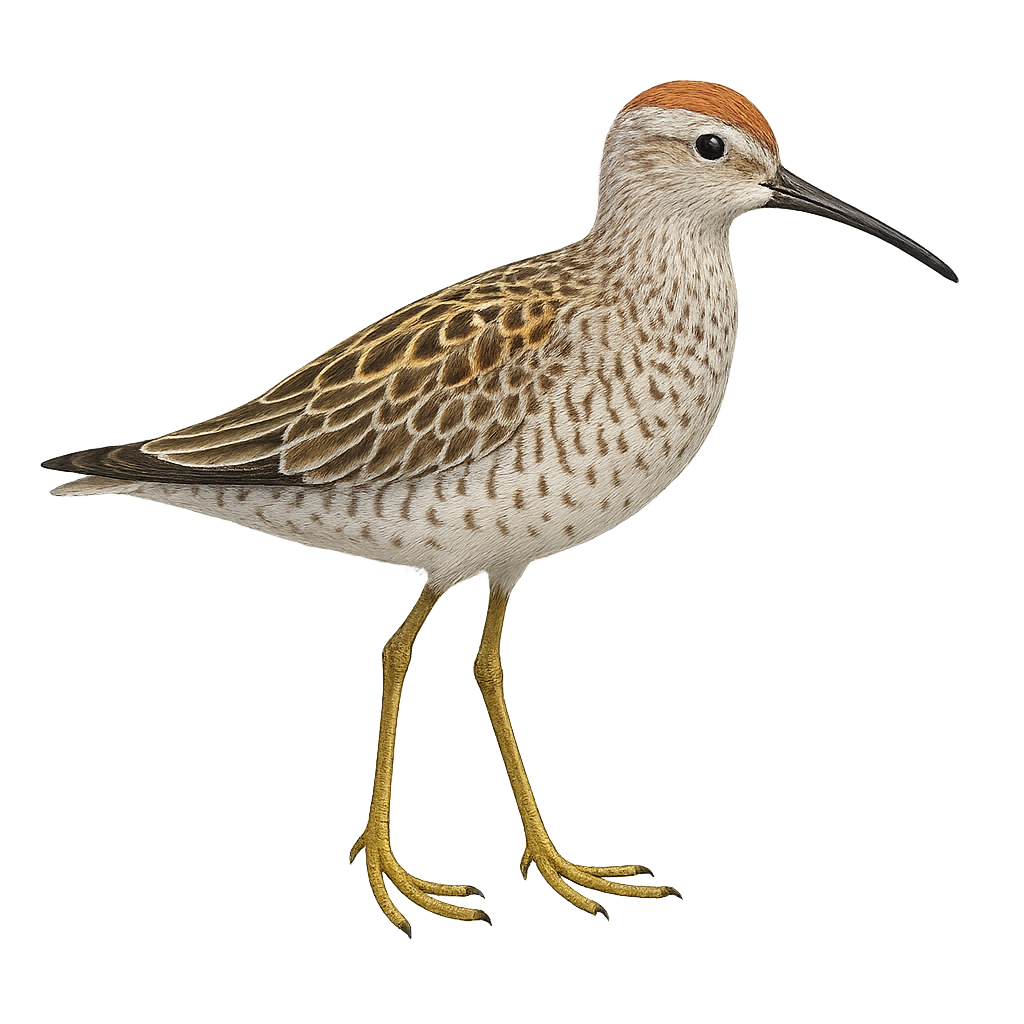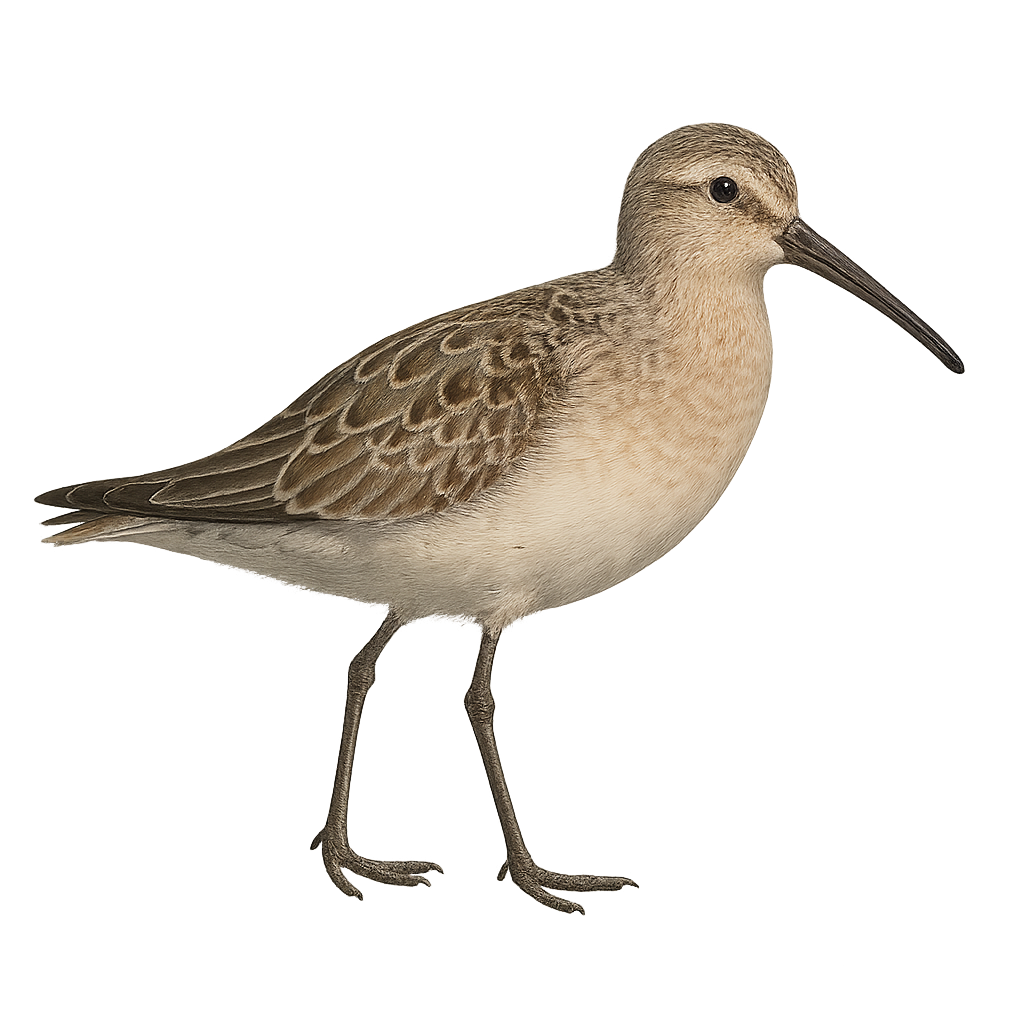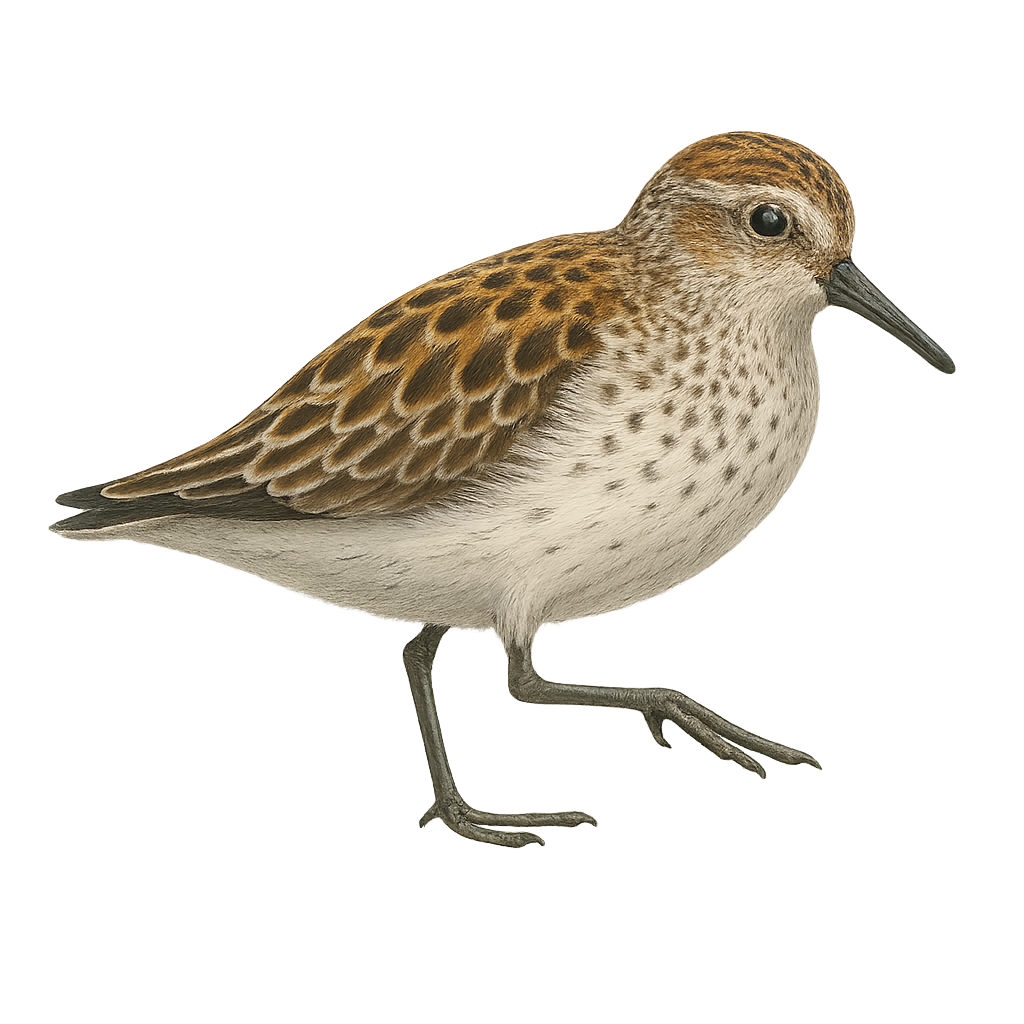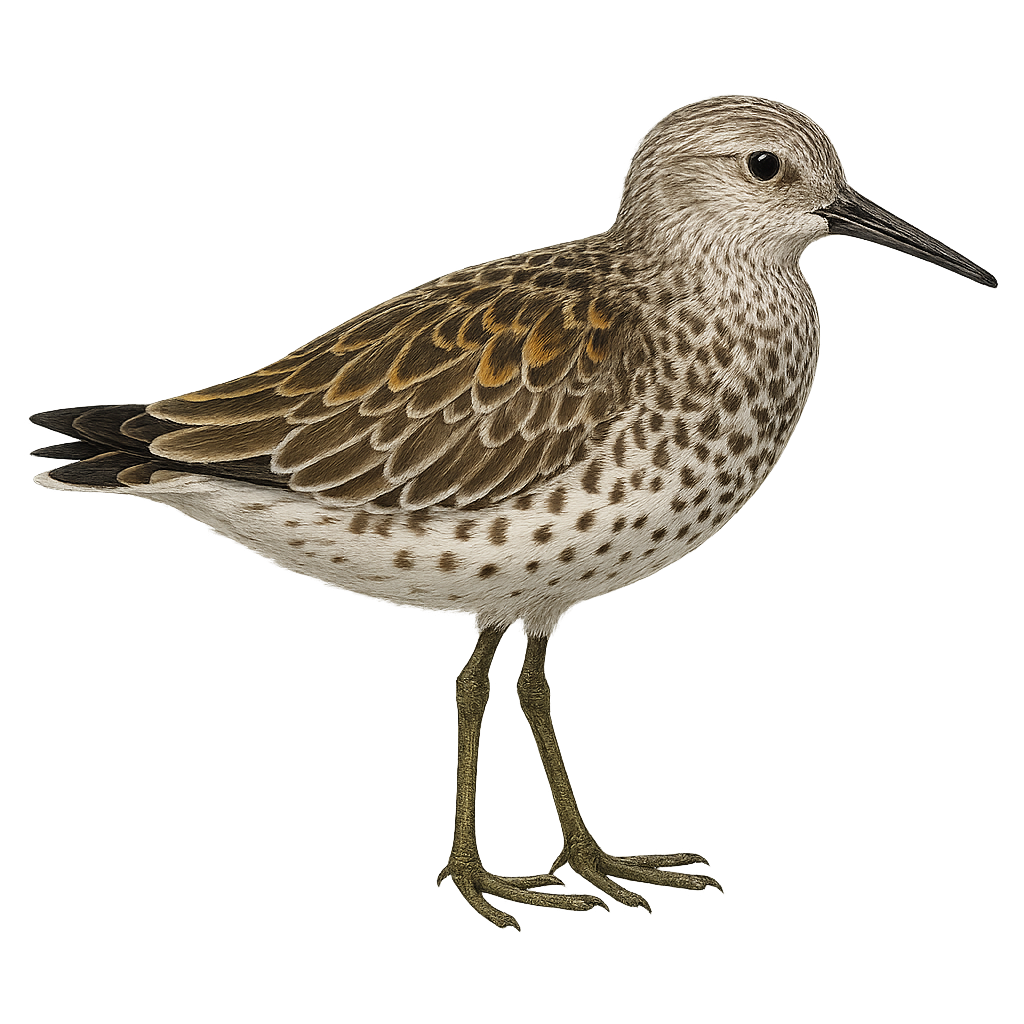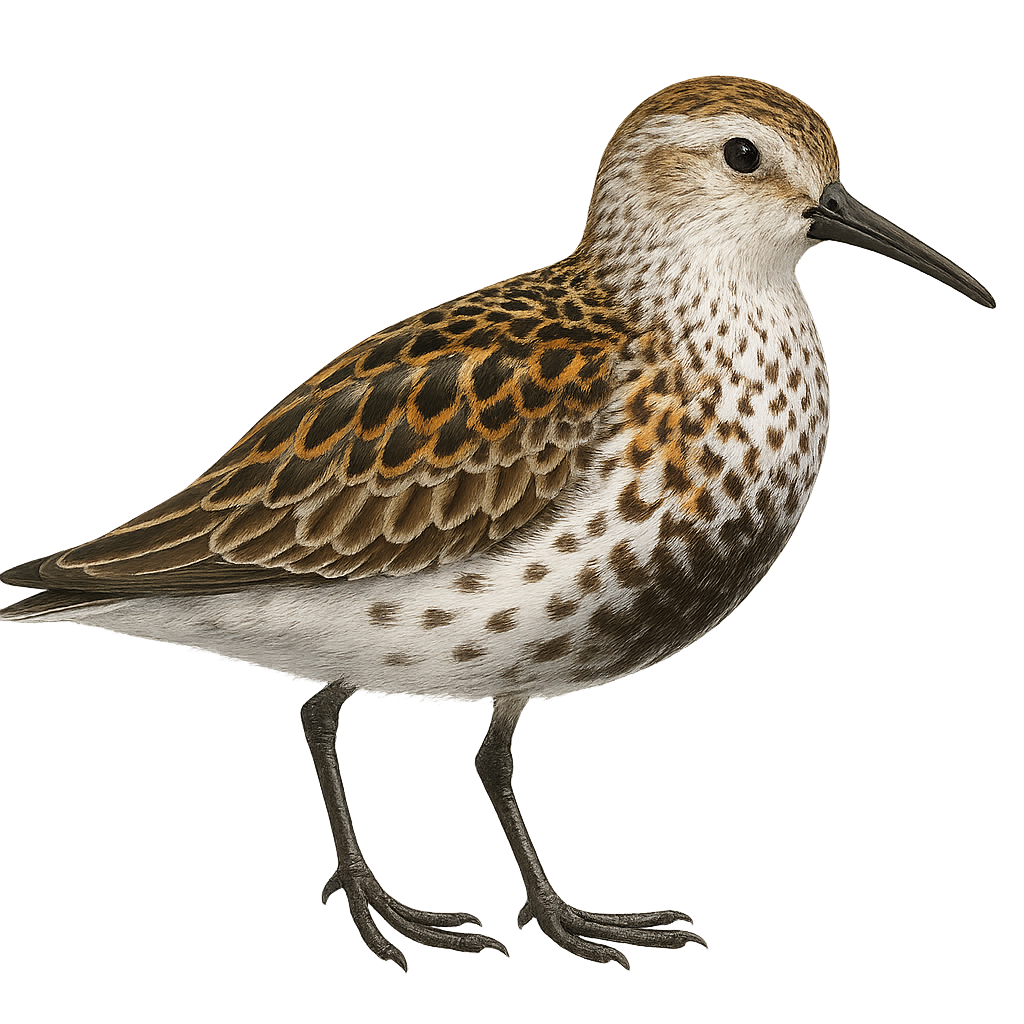The Upland Sandpiper, or Bartramia longicauda, is a medium-sized migratory bird belonging to the Scolopacidae family. It is recognizable by its mottled brown plumage, long yellow legs, and slender bill. This bird prefers open grasslands and agricultural fields, where it primarily feeds on insects and small invertebrates. The Upland Sandpiper is known for its spectacular courtship flights, during which it emits melodious calls. It nests on the ground, often hidden in tall grasses, and its eggs are well camouflaged. Although its population is stable, it is vulnerable to habitat loss due to intensive agriculture and urbanization.
The Green Crested Basilisk is an impressive species native to the tropical forests of Central America. This lizard is famous for the distinctive crest on its head and back, as well as for its ability to run on water, earning it the nickname 'Jesus Christ lizard.' It uses this ability to escape predators by running at high speed across shallow water surfaces. Primarily arboreal, it spends much of its life in trees and bushes, where it feeds on small insects, fruits, and flowers. This lizard is also known for its bright green color and distinctive patterns.
The Jesus Christ Lizard is a fascinating reptile, named for its unique ability to run across water for short distances. This striking lizard, recognizable by the distinctive crest on its back and its vibrant coloration, primarily inhabits the tropical forests of Central and South America, particularly in Costa Rica and Panama. The Jesus Christ Lizard feeds on insects, fruits, and small animals, hunting them in the understory. When threatened, it uses its ability to run across water to escape predators, creating a spectacular fleeing scene.
Although it is a master of escape, the Jesus Christ Lizard is vulnerable to deforestation and the loss of its natural habitat.
The Bassariscus astutus, commonly known as the ringtail, is a small carnivorous mammal native to North America. It is recognizable by its long, ringed tail and gray-brown fur. This small predator is highly agile and adaptable, allowing it to thrive in various habitats, from forests to urban areas. Primarily nocturnal, it feeds on a variety of foods, including fruits, insects, and small vertebrates. Although solitary, it can sometimes be seen in small family groups. Its ability to climb and squeeze into tight spaces makes it a fascinating animal to observe.
The Black-throated Antshrike, or Thamnophilus melanothorax, is a bird from the Thamnophilidae family. It is recognized for its distinctive black and white plumage, with a characteristic black throat. This bird is primarily found in the humid tropical forests of the Amazon, where it feeds on insects and other small invertebrates. Measuring about 15 to 17 cm, it is often identified by its distinctive song. The Black-throated Antshrike is a territorial bird, often observed in pairs or small family groups. Although not considered threatened, deforestation poses a potential threat to its natural habitat.
The Speckled Antbird is a rare and fascinating bird, endemic to the humid tropical forests of Central America, mainly in Panama. It is distinguished by its brown speckled plumage and its front adorned with white bristly feathers, giving it a unique appearance. This discreet bird prefers dense undergrowth where it primarily feeds on insects and spiders. It is often observed in small groups or pairs, moving stealthily through the vegetation. Its ability to blend into its environment makes it difficult to spot, adding to its mystery. Although its habitat is threatened by deforestation, it is currently classified as "Least Concern" by the IUCN.
The Savanna Hawk is an impressive bird of prey, easily recognized by its light brown plumage and large wings, which allow it to fly with agility over the grasslands and savannas of sub-Saharan Africa. This bird is particularly known for its unique hunting techniques, where it chases and captures insects, small mammals, and birds, often flying at low altitudes at high speeds. The Savanna Hawk gets its name from its erratic behavior, often seen during its swift and precise attacks.
The Savanna Hawk is a solitary bird, building its nest in trees, often at great heights, to avoid predators. While not currently threatened, the loss of its habitat due to human expansion could pose a risk to its population.
The Senegal Batis is a small passerine bird belonging to the Platysteiridae family. It is primarily found in sub-Saharan Africa, inhabiting dry forests, savannas, and wooded areas. This bird is recognizable by its distinctive plumage, featuring a grey back, white belly, and a black band across the chest. Males and females exhibit sexual dimorphism, with males having a more pronounced black band. The Senegal Batis is insectivorous, feeding mainly on insects caught in flight or foraged from foliage. It is often seen in pairs or small family groups.
The Eastern Black-headed Batis is a small passerine bird belonging to the Platysteiridae family, predominantly found in the arid and semi-arid regions of East Africa. It is characterized by its striking black and white plumage, with a distinctive black band across the head and a white chest. Males and females exhibit sexual dimorphism, with males displaying brighter colors. This bird is often seen alone or in pairs, feeding mainly on insects caught in flight or on the ground. Known for its melodious calls and territorial behavior, the Eastern Black-headed Batis is a diurnal bird, active mainly in the morning and late afternoon. It is relatively tolerant of human presence, making it easier to observe.
The Pygmy Batis (Batis perkeo) is a small insectivorous bird from the Platysteiridae family, primarily found in the arid and semi-arid regions of East Africa. It is characterized by its striking black and white plumage, with a distinctive black band across its chest. Males and females look similar, although females often have browner tones. This bird is known for its active and agile behavior, often seen hopping from branch to branch in search of insects. It prefers habitats such as dry savannas, thornbushes, and sparse woodlands. Although relatively understudied, the Pygmy Batis is considered a species of least concern by the IUCN due to its wide distribution and stable population.
The Orange-breasted Waxbill, or Pytilia hypogrammica, is a small, colorful bird belonging to the Estrildidae family. It is primarily found in West Africa, particularly in savannas and open wooded areas. This bird is notable for its vibrant plumage, with a bright orange belly contrasting with gray-green wings and back. Both males and females display similar colors, although males are often more vivid. They primarily feed on seeds but also consume insects, especially during the breeding season. Their song is soft and melodious, often used to attract mates. Although their population is stable, deforestation and capture for the pet trade can pose potential threats.
The Green-winged Pytilia, or Pytilia melba, is a small, colorful bird belonging to the Estrildidae family. It is primarily found in sub-Saharan Africa, where it inhabits savannas, open woodlands, and shrublands. This bird is distinguished by its vibrant plumage, featuring green wings, a red belly, and a brownish back. Both males and females exhibit similar colors, although males are often more vibrant. The Green-winged Pytilia is a granivorous bird, mainly feeding on seeds but also consuming insects. It is known for its melodious songs and elaborate courtship displays. Although generally not very shy, it can be suspicious when faced with potential threats.
The Scottish Crossbill, Loxia scotica, is a bird endemic to the coniferous forests of the Scottish Highlands. It is particularly adapted to its environment thanks to its unique crossed bill, which allows it to extract seeds from pine cones, its main food source. This bird exhibits sexual dimorphism, with males displaying a reddish hue while females are more greenish. The Scottish Crossbill is often observed in small groups, and although it is relatively discreet, its melodious song can be heard in the forests. Its population is stable, but due to its restricted habitat, it is considered vulnerable to environmental changes.
The crossbill is a passerine bird found primarily in coniferous forests across Europe, Asia, and North America. It is easily recognized by its bright red plumage in males and its crossed bill, which allows it to extract seeds from pine cones and other conifers. This small bird is often seen in groups, primarily feeding on tree seeds. It is also known for its melodious song.
The Ibisbill, Ibidorhyncha struthersii, is a unique and fascinating bird, easily recognizable by its long, downward-curved red bill and its grey and white plumage. It primarily inhabits mountain rivers and gravel beds in Central Asia, particularly in the Himalayan regions. This bird is particularly adapted to its environment, using its distinctive bill to probe into pebbles and sediments in search of food, mainly aquatic insects and small crustaceans. Although discreet, the Ibisbill is often observed in small groups or pairs, especially during the breeding season. Its ability to blend into its rocky environment sometimes makes it difficult for observers to spot.
The Stub-tailed Spadebill is a small passerine bird belonging to the Tyrannidae family. It is primarily found in the tropical and subtropical forests of Central America, notably in Mexico, Guatemala, and Honduras. This bird is characterized by its ash-colored throat, short bill, and relatively short tail. It feeds mainly on insects, which it catches in flight or on leaves. Its song is discreet, often difficult to detect in dense vegetation. Although its habitat is threatened by deforestation, it remains relatively common in some areas. The Stub-tailed Spadebill is a fascinating bird for amateur and professional ornithologists alike.
The Black Skimmer, or Rynchops niger, is a distinctive waterbird known for its unique scissor-like bill. The lower mandible is longer than the upper, allowing it to skim the water's surface to catch fish. This feeding behavior is fascinating to watch. Adults have black plumage on their back and white on their belly, with long, pointed wings. They nest in colonies on sandy beaches or islands, often alongside other seabirds. Their distinctive call, a nasal bark, is often heard in coastal areas where they reside. These birds are primarily found in the Americas, from the southern United States to Argentina.
The Shoebill stork is a majestic and imposing bird, easily recognized by its large, shoe-shaped bill that allows it to capture fish and small aquatic animals. It is found primarily in swamps, lakes, and wetlands of East Africa, especially in Sudan, Uganda, and Rwanda. This large wader is a slow yet precise predator, sometimes waiting for long hours before striking its prey. The Shoebill is a vulnerable species due to habitat loss and hunting.
The African Openbill, or Anastomus lamelligerus, is a bird from the Ciconiidae family, predominantly found in sub-Saharan Africa. It is easily recognizable by its distinctive bill, slightly curved with a gap between the mandibles, perfect for catching snails, its primary food source. Its plumage is generally black with metallic sheens, and it has long legs adapted for walking in wetlands. It frequents marshes, rivers, and lakes, where it can be seen foraging. Although often solitary, it may gather in groups during the breeding season.
The American Woodcock, Scolopax minor, is a medium-sized bird known for its mottled brown plumage that provides excellent camouflage in the underbrush. It has a long, straight bill perfect for probing the soil for worms and insects. This bird is most active at dusk and dawn, performing its spectacular courtship displays. The American Woodcock is a partial migrant, moving southward in winter. It favors moist habitats such as deciduous forests and swamps. Although elusive, it can occasionally be spotted due to its distinctive call and acrobatic flights.
The Rosenberg's Woodcock, scientifically known as Scolopax rosenbergii, is a fascinating bird belonging to the Scolopacidae family. It is characterized by its mottled brown plumage, which provides excellent camouflage in its natural habitat. This bird is primarily nocturnal and crepuscular, making it difficult to observe. It inhabits dense, humid forests, often at altitudes between 1000 m and 2000 m. The Rosenberg's Woodcock is known for its suspicious behavior, making it even harder to approach. It primarily feeds on invertebrates, which it probes from the soil with its long bill. Although its conservation status is not of concern, it remains a little-studied and mysterious species.
The Woodcock is a discreet and nocturnal bird, difficult to spot due to its speckled plumage that allows it to blend perfectly into the undergrowth of forests in Europe and Asia. This bird, with its silent flight, is primarily insectivorous, feeding on earthworms, insects, and small arthropods it finds by probing the ground with its long, straight bill. The Woodcock is known for its erratic flights and mysterious calls during the breeding season, often heard as a "wingbeat" in the woods.
It leads a quiet and solitary life, creating a nest on the ground, well-hidden among dense vegetation. Although its population is relatively stable, the Woodcock is sometimes threatened by deforestation and disturbance of its natural habitats.
The Scolopax mira, or mysterious woodcock, is a fascinating bird that intrigues ornithologists with its discreet behavior and lifestyle. It is distinguished by its brown mottled plumage, which allows it to blend perfectly into its forest environment. This bird is generally found in dense, humid forests, where it primarily feeds on earthworms and insects. The mysterious woodcock is known for its spectacular courtship displays, often performed at dusk. Although its behavior is generally shy, it can sometimes be observed more closely by patient watchers. Its ability to remain motionless for long periods makes it difficult to spot, adding to its aura of mystery.
The Stilt Sandpiper, Calidris himantopus, is a medium-sized shorebird known for its long legs and slightly curved bill. It displays a striking breeding plumage with brown and white patterns on its head and back. Outside the breeding season, its plumage becomes duller with grayish tones. It primarily inhabits wetlands, marshes, and mudflats, feeding on small invertebrates. A migratory bird, it breeds in Arctic regions and migrates south for the winter. Its flight is swift and direct, often in small flocks. Although its conservation status is currently stable, habitat degradation poses a potential threat.
The Curlew Sandpiper, Calidris ferruginea, is a small wader belonging to the Scolopacidae family. It is easily identifiable by its reddish breeding plumage and slightly curved long bill. Outside the breeding season, its plumage turns duller with grayish tones. This migratory bird travels long distances between its breeding grounds in Siberia and its wintering areas in Africa, South Asia, and Australia. It primarily inhabits coastal wetlands, estuaries, and lagoons, feeding on small invertebrates by probing the mud with its bill. The Curlew Sandpiper is a gregarious bird, often seen in large flocks during migration.
The Western Sandpiper, Calidris mauri, is a small shorebird found primarily along the coasts and wetlands of North America. It is identifiable by its brownish-gray plumage with darker patterns on the back and a slightly streaked breast. Its slender, slightly curved bill is well-suited for probing mud for food. During the breeding season, it migrates to Arctic and subarctic regions to nest. Its diet mainly consists of invertebrates, small crustaceans, and insects. Outside the breeding season, it often forms large flocks with other sandpiper species.
The Great Knot is a medium-sized migratory bird belonging to the Scolopacidae family. It is recognizable by its speckled brown plumage and long, slender bill. During the breeding season, it displays more pronounced patterns on its back and chest. This bird breeds mainly in the Arctic regions of Siberia and migrates to the coasts of Australia and Southeast Asia for the winter. It frequents wetlands, estuaries, and sandy beaches where it primarily feeds on mollusks, crustaceans, and insects. The Great Knot is a vulnerable species due to habitat loss and human disturbances.
The Rock Sandpiper, Calidris ptilocnemis, is a medium-sized shorebird, measuring about 20 to 22 cm in length. It is identifiable by its brownish-gray plumage with scaly patterns on the back and streaked breast. During the breeding season, it displays a more vibrant hue with reddish tones. This bird primarily inhabits rocky coasts and beaches of Alaska and the Russian Far East. It feeds mainly on small invertebrates found by probing the sand or seaweed. A partial migrant, it sometimes winters as far south as California. Its population is stable, although locally threatened by habitat loss and human disturbances.
The Broad-billed Sandpiper, Calidris falcinellus, is a small wader bird belonging to the Scolopacidae family. It is identifiable by its slightly down-curved bill and brownish plumage with lighter patterns on the belly. During the breeding season, it displays more vibrant colors with black streaks on the back. This migratory bird breeds in the Arctic regions of Scandinavia and Russia and migrates to the wetlands of Africa, South Asia, and Australia for winter. It primarily inhabits marshes, mudflats, and muddy shores where it feeds on small invertebrates. Its ability to travel long distances makes it a remarkable voyager.
The Red Knot, or Calidris canutus, is a remarkable migratory bird belonging to the Scolopacidae family. Known for its impressive migrations, it travels thousands of kilometers between its Arctic breeding grounds and its southern hemisphere wintering areas. This medium-sized bird features a distinctive reddish breeding plumage, which becomes duller in winter. It primarily feeds on mollusks, crustaceans, and insects found in mudflats and beaches. The Red Knot plays a crucial role in coastal ecosystems, helping regulate prey populations. Its survival is threatened by habitat loss and climate change, making it a species of conservation concern.


